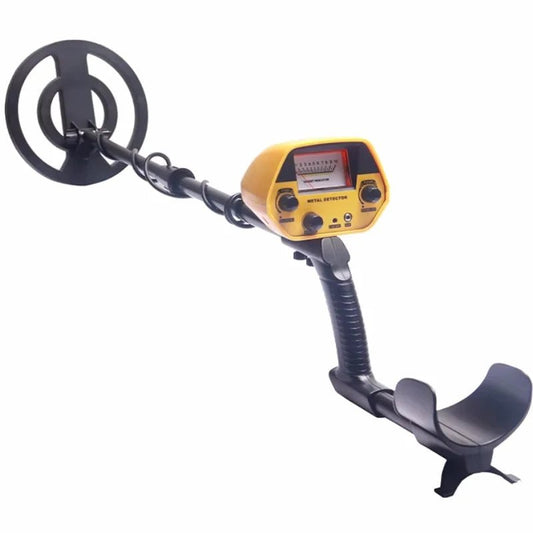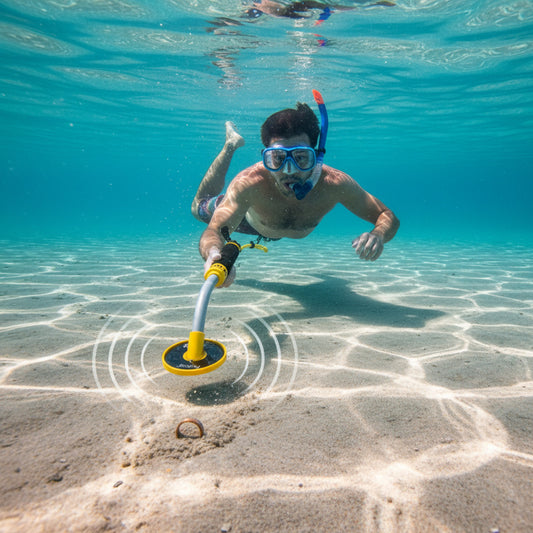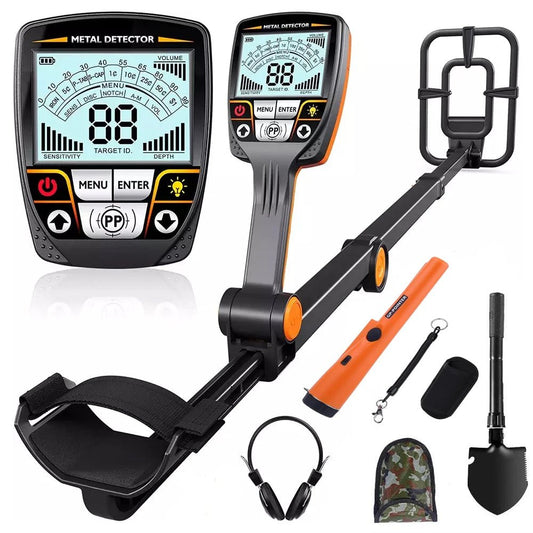
Metal Detecting in Winter: A Comprehensive Guide to Cold Weather Treasure Hunting
Share
Metal detecting in winter offers a unique set of challenges and opportunities for treasure hunters. As we enter 2025, more enthusiasts are discovering the benefits of braving the cold for potentially rewarding finds.
This comprehensive guide will explore the ins and outs of metal detecting in winter, from essential gear to expert techniques and prime locations.
Why Consider Metal Detecting in Winter?

While many detectorists pack away their equipment when the temperature drops, winter can actually be an excellent time for metal detecting:
-
Less Competition: Fewer people are out detecting, giving you access to less-crowded areas.
-
Frozen Ground: Frozen soil can make it easier to recover targets in some cases.
-
Beach Hunting: Winter storms can reveal treasures on beaches .
-
Historical Sites: Some historical locations are more accessible in winter due to reduced foliage.
Essential Gear for Winter Metal Detecting

Proper equipment is crucial for comfortable and successful metal detecting in winter:
1. Cold Weather Clothing
-
Layered clothing for flexibility
-
Waterproof and insulated boots
-
Thermal socks and underwear
-
Insulated, waterproof gloves
2. Metal Detector Considerations
-
Ensure your detector is rated for cold temperatures
-
Consider a model with a waterproof control box for snow conditions
-
Use lithium batteries, which perform better in cold weather
3. Digging Tools
-
Invest in a sturdy, rust-resistant digging tool
-
Consider a smaller trowel for frozen ground
4. Additional Equipment
-
Thermos with hot beverages
-
Hand and foot warmers
-
Waterproof bag for your finds
Techniques for Successful Winter Metal Detecting

Adapting your detecting techniques for winter conditions can improve your success rate:
-
Adjust Detector Settings: Cold can affect your detector's performance, so fine-tune your settings.
-
Slow Down: Move more slowly to ensure thorough coverage in challenging conditions.
-
Target Recovered Ground: Areas recently plowed or cleared of snow can yield fresh finds.
-
Focus on Sunny Days: The ground may be softer on warmer, sunny winter days.
Best Locations for Metal Detecting in Winter

Some locations are particularly promising for winter metal detecting:
1. Beaches
Winter storms can dramatically alter beaches, uncovering new treasures:
-
Focus on areas where erosion has occurred
-
Check the high tide line after storms
-
Explore newly exposed sand bars
2. Parks and Fields
With less vegetation, some areas become more accessible:
-
Look for areas where snow has melted or been cleared
-
Focus on high-traffic zones like paths and gathering spots
3. Historical Sites
Some historical locations offer unique winter opportunities:
-
Abandoned towns or homesteads may be more accessible
-
Battlefield sites can be easier to navigate without dense foliage
4. Ski Resorts and Winter Recreation Areas
Popular winter destinations can be treasure troves:
-
Search parking lots and lift lines
-
Check areas around lodges and restaurants
Safety Considerations for Winter Detecting
Safety should always be your top priority when metal detecting in winter:
-
Check Weather Conditions: Be aware of incoming storms or severe cold.
-
Tell Someone Your Plans: Always let someone know where you're going and when you'll return.
-
Stay Hydrated: It's easy to forget to drink water in cold weather.
-
Watch for Ice: Be cautious of slippery surfaces, especially near water.
-
Know the Signs of Hypothermia: Familiarize yourself with symptoms like shivering and confusion.
Legal and Ethical Considerations
Even in winter, it's crucial to detect responsibly and legally:
-
Obtain Necessary Permissions: Always get proper permits or landowner approval.
-
Respect Protected Areas: Many historical sites prohibit metal detecting.
-
Fill Your Holes: Even in frozen ground, always fill any holes you dig.
-
Report Significant Finds: If you uncover items of historical importance, report them to proper authorities.
What You Might Find When Metal Detecting in Winter
Winter detecting can yield a variety of interesting finds:
-
Lost jewelry from winter activities
-
Coins dropped in snow
-
Historical artifacts exposed by erosion or frost heave
-
Modern items lost during winter events
Conclusion: Embracing the Chill for Potential Thrills
Metal detecting in winter offers a unique adventure for those willing to brave the cold. While it presents challenges, the potential rewards – both in terms of finds and the joy of outdoor exploration – make it a worthwhile pursuit. By equipping yourself properly, adapting your techniques, and choosing your locations wisely, you can turn the winter months into a productive and exciting detecting season.
Remember, successful winter metal detecting is about more than just finding treasures. It's about enjoying the serene beauty of winter landscapes, challenging yourself, and potentially uncovering pieces of history that others might miss. So, don't let the cold keep you indoors – gear up, get out there, and see what winter wonders await your detector!
Whether you're a seasoned detectorist looking to extend your hunting season or a newcomer eager to try something different, winter metal detecting offers a fresh perspective on this fascinating hobby. Stay warm, stay safe, and happy hunting!




